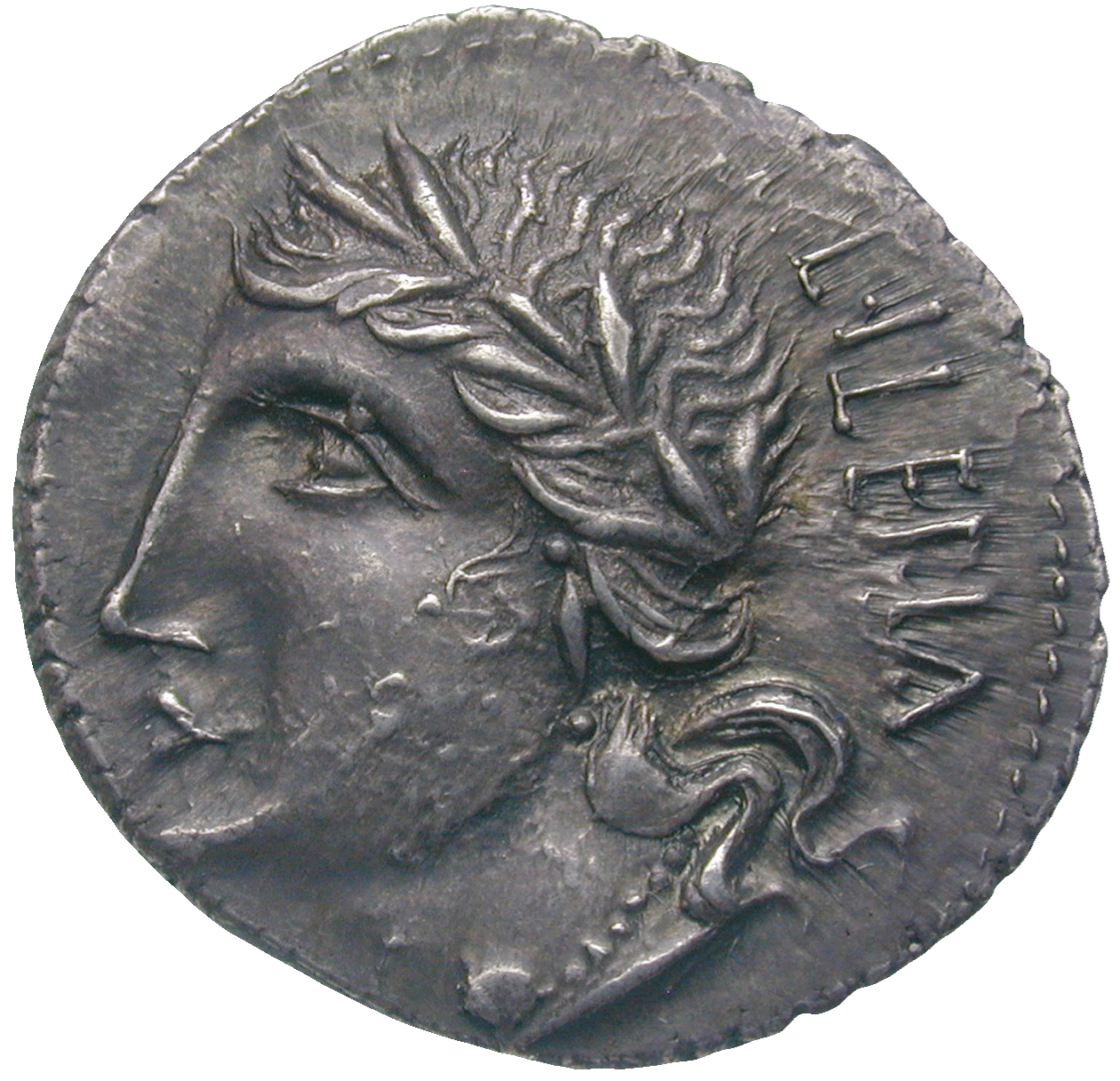The conflict developed out of dissatisfaction amongst the allied Italian peoples, who served in the Roman armies but did not enjoy equal compensation in terms of political rights and compensation in booty and land. The war was begun by the Picentes.
The Confederation included Marsi, Peligni, Piceni, Vestini, Samnium, Frentani, Marrucini, and Lucani. The group intended to form an independent nation called Italia with its capital at Corfinium (modern day Abruzzo). Their coinage, modeled on the Roman denarius system, prominently depicted a female personification of Italia and oath-taking scenes reflecting the origins on the anti-Roman alliance, and other types picturing anti roman propaganda. While the alliance was defeated on the battlefield, Rome eventually ended up enfranchising all of Italy, effectively acceding to the alliance's demands.


Reverse: Soldier (or Mars?) standing facing, head right, left foot on lorica, holding inverted spear in right hand and sword in left; to right, recumbent bull facing, head left; I in exergue.
Die Orientation: -
Weight: 3.75 g
Provenance: Roma Numismatics Auction XVI (26 September 2018), lot 537. Ex Bolaffi Spa, Auction 29 (30 November 2016), lot 80.
.png)
Reverse: Oath-taking scene: Youth kneeling by standard, holding pig at which eight soldiers (four on each side) point their swords, C in exergue.
Die Orientation: -
Weight: 3.64 g
.png)
Reverse: Soldier(or Mars?), nude to waist, standing facing, helmeted head turned right, holding lance with his right hand, sword in his lowered left hand; on left, four shields attached to a tree, on right, forepart of bull reclining right, in exergue, IIIV.
Die Orientation: -
Weight: 3.72 g
